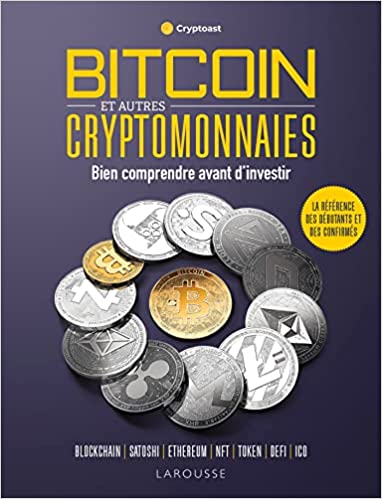Appearing on December 14, 2022, registrations on Ordinals caused a veritable tidal wave in the Web3 ecosystem. These new kind of NFTs imagined by developer Casey Rodarmor are registered directly in the Bitcoin blockchain. Some welcome this revolution with open arms, while others see it as defeating Bitcoin’s purpose. In this article, we tell you everything you need to know about Bitcoin Ordinals.
Bitcoin Ordinals: what is it?
For simplicity, the Ordinals protocol makes it possible to permanently and immutably write data on the Bitcoin blockchain. It works a bit like on a cloud, but everything is decentralized and transparent.
Behind this invention, we find Casey Rodarmora former Bitcoin Core developer. It was on Twitter that he announced the finalization of the Ordinals protocol on January 20, 2023just over a month after making the first listing on Bitcoin’s mainnet.
Registrations are finally ready for Bitcoin mainnet.
Inscriptions are like NFTs, but are true digital artifacts: decentralized, immutable, always on-chain, and native to Bitcoin. ?https://t.co/a4dK7zdITS
—Casey Rodarmor (@rodarmor) January 20, 2023
That’s all well and good, but how does it work? As you probably know, each Bitcoin is divisible into 100 million units called satoshis (or sats). VSit is these satoshis that are used as supports for inscriptions on Ordinals.
As with NFTs (non-fungible tokens), listings on Ordinals allow you to store images, text, audio clips, but also security tokens, stablecoins, smart contracts, etc. For the joke, a user named Nicholas Carlini went so far as to upload on the Bitcoin blockchain yet another clone of the Doom video game, which has already experienced all possible and imaginable media.
It should be noted that this innovation was made possible following two updates to the Bitcoin blockchain: SegWit in 2017 and Taproot in 2021. Indeed, they made it possible to quadruple the size of the blocks to reach 4 megabytes, and thus allow them to host the data registered on Ordinals.
? Read before buying your first bitcoins: How to buy Bitcoin in 2023? Get guided step by step
? Cryptoast Research Launch Offer
1st Newsletter Free with the code TOASTNL
Listings are digital artifacts, not NFTs
Listings on Ordinals are generally referred to as NFTs registered on the Bitcoin blockchain. But in reality they differ greatly from non-fungible tokens issued on other protocols like Ethereum or Solana.
When he explains his creation in his Manuel de la Théorie Ordinale (Ordinal Theory Handbook in the original version), Casey Rodarmor insists on the distinction between what he calls digital artefacts and classic NFTs.
We have compiled for you the main differences highlighted by Casey Rodarmor between digital artifacts and NFT. They make it possible to clearly identify the characteristics of registrations on Ordinals:
- He insists that digital artifacts are complete. Unlike NFTs which almost systematically refer to content hosted on IPFS or Arweave, registrations on Ordinals are stored directly in the blocks of the Bitcoin blockchain.
- He points out that NFTs cannot be sold for free (without paying fees or royalties) and can be upgraded, unlike Bitcoin Ordinals that are permissionless and immutable.
Concluding his presentation, Casey Rodarmor regrets that NFTs aren’t true digital artifactsunlike listings on Ordinals:
“The definition of a digital artifact is intended to reflect what NFTs should be, sometimes are, and what inscriptions always are, by their very nature. »
? To better understand the interest of non-fungible tokens and their potential: NFT: our explanations to understand everything in a few minutes
Buy NFTs on Binance
Discover Binance’s NFT Marketplace ?

A revolution that divides the Bitcoin community
As with almost every innovation, the Bitcoin community is split over Ordinals listings. Among the most vocal critics are those who regard these digital artifacts as an attack on the bitcoin networklike the historical developer of Bitcoin Luke Dashjr who denounces the method used by Casey Rodarmor.
We can have NFTs and collectables on Bitcoin without spamming/attacking the network.
Taproot actually makes this even easier; the “tapscript” could be a new kind that refers to a torrent magnet instead of a script, and the spend on-chain doesn’t need to add any data.
— Luke Dashjr (@LukeDashjr) February 3, 2023
More generally, many users believe that Bitcoin was not created to house digital artifacts.
Faithful to the good word of his progenitor Satoshi Nakamoto, who said in 2010 that Bitcoin could only be used for financial purposesthey believe that Bitcoin can have no other role than that of a cryptocurrency.
Another problem is pointed out: listings on Ordinals question the fungibility of satoshiswhich can be perceived as more or less valuable depending on the data they contain.
Other skeptics make more persuasive arguments about how the Bitcoin blockchain works. They point to the fact that listings on Ordinals could crowd blocks at the expense of traditional transactions. They also fear the increase in Bitcoin fees inevitably caused by this innovation.
According to a report issued by Glassnode, this increase has already been observed since the launch of Ordinals at the end of January, but it remains contained for the moment. Finally, some are concerned that this innovation could open the door to malware attacks on the Bitcoin blockchain.
If some voices are offended by the arrival of registrations on Ordinals, others welcome these digital artifacts with open arms. This is particularly the case of Bitcoin maximalist Dan Held, who showed his support for the Ordinals protocol by unearthing an email from legend Hal Finney that goes against the opinion of Satoshi Nakamoto.
More than 30 years ago, this Bitcoin pioneer was already talking about the possibility of selling and buying crypto trading cards, which suggests that he probably would have been a fan of the creation of Casey Rodarmor.
Hal Finney would like Bitcoin NFTs. pic.twitter.com/z4cO468pcA
— Dan Held (@danheld) February 6, 2023
Among other positive points put forward by members of the Bitcoin community, many people welcome the increase in fees caused by registrations on Ordinals.
The reason is simple: miners who secure the blockchain are better paid, and therefore have more incentive to work for the proper functioning of Bitcoin. This is a strong argument when you keep in mind that halvings halve their rewards every 4 years.
? Discover our ultra-comprehensive guide to Bitcoin
Order our Book to understand everything about cryptos
Published by Editions Larousse

The most notable collections so far on Ordinals
Casey Rodarmor’s creation has had some success. At the time of writing this article (February 2023), there were nearly 175,000 listings on Ordinals. This is proof that this new tool has found its audience despite the criticisms.
Some collections of digital artifacts have already been noticed since the launch of the Ordinals protocol. While some are largely inspired by the NFTs that can be found on Ethereum, others are original creations. We’ve compiled the most notable projects to date for you :
- Ordinal Punks: this tribute to the essential CryptoPunks brings together 100 registrations from the first 650 of the Ordinals protocol. One of these Ordinal Punks was sold for 9.5 BTC on February 8, 2023, the equivalent of over $220,000 at the time of the sale.
- Taproot Wizards: these designs created by indie developer Udi Wertheimer caused a stir when the collection’s first listing led to the largest block and largest transaction in Bitcoin’s history.
- Bitcoin Rocks: inspired by one of the very first collections of NFT on Ethereum, the EtherRocks, this project includes 100 digital artifacts.
- Ordinal Loops: Starting at entry 452, the Ordinal Loops are part of the pioneering collections on the Ordinals protocol. They use text format to create artwork that pays homage to Bitcoin and the emergence of a new, more inclusive monetary system.
Very technical at first, and reserved for Bitcoin node operators, registrations on Ordinals are democratizing at high speed.
They are now accessible to all, and we see new collections of digital artifacts on Bitcoin blooming every day. And obviously, this new phenomenon does not intend to stop there… On February 19, the developer Anthony Guerrera transposed the Ordinals protocol to the Litecoin blockchain, which he considers to be better suited to these digital artifacts (lower costs, more blocks bulky and possibility to take advantage of anonymous transactions).
The Ordinals are popular at the start of 2023, but we do not yet know if they will succeed in winning over time., and experience the same success as NFTs deployed on other blockchains. One thing is sure, they leave no one indifferent in the Bitcoin and Web3 ecosystem.
? To deepen the subject of Bitcoin Ordinals and its implications for the queen of cryptocurrencies, watch our interview with Fanis Michalakis, developer for LN Markets
Sources: NFT Now, Glassnode, Les Echos
Newsletter ?
Receive a summary of crypto news every Monday by email ?
What you need to know about affiliate links. This page presents assets, products or services relating to investments. Some links in this article are affiliated. This means that if you buy a product or register on a site from this article, our partner pays us a commission. This allows us to continue to offer you original and useful content. There is no impact on you and you can even get a bonus by using our links.
Investments in cryptocurrencies are risky. Cryptoast is not responsible for the quality of the products or services presented on this page and could not be held responsible, directly or indirectly, for any damage or loss caused following the use of a good or service highlighted in this article. Investments related to crypto-assets are risky by nature, readers should do their own research before taking any action and only invest within the limits of their financial capabilities. This article does not constitute investment advice.
AMF recommendations. There is no guaranteed high return, a product with high return potential involves high risk. This risk-taking must be in line with your project, your investment horizon and your ability to lose part of this savings. Do not invest if you are not ready to lose all or part of your capital.
To go further, read our Financial Situation, Media Transparency and Legal Notices pages.

